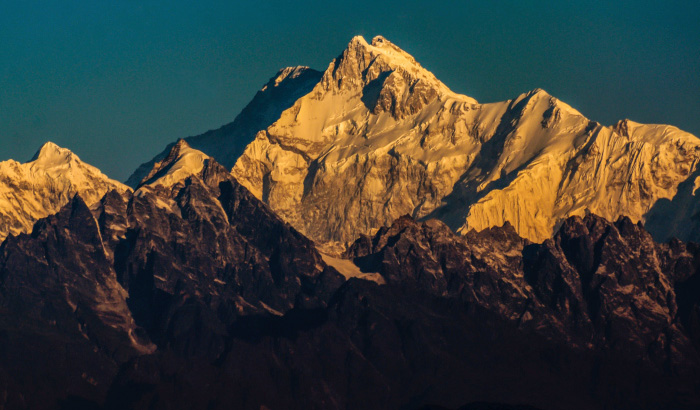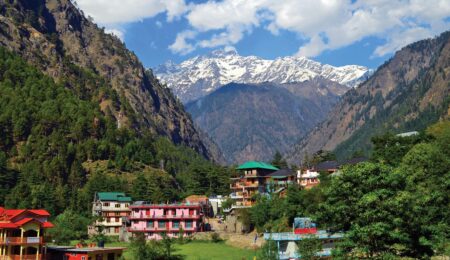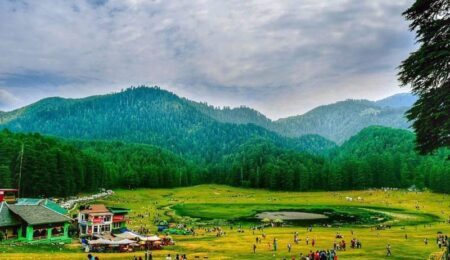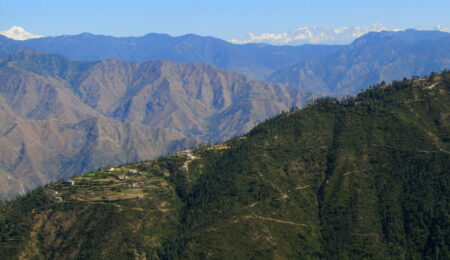 Nestled in the heart of the Eastern Himalayas, the Kangchenjunga Mountain Range stands as a testament to nature’s grandeur and awe-inspiring beauty. This magnificent mountain range is a paradise for trekkers, offering a unique blend of adventure, breathtaking landscapes, and cultural richness. In this article, we will explore the wonders of the Kangchenjunga Mountain Range, delving into its geographical features, significance, trekking opportunities, and the rich cultural heritage it encompasses.
Nestled in the heart of the Eastern Himalayas, the Kangchenjunga Mountain Range stands as a testament to nature’s grandeur and awe-inspiring beauty. This magnificent mountain range is a paradise for trekkers, offering a unique blend of adventure, breathtaking landscapes, and cultural richness. In this article, we will explore the wonders of the Kangchenjunga Mountain Range, delving into its geographical features, significance, trekking opportunities, and the rich cultural heritage it encompasses.
The Kangchenjunga Mountain Range is located in the easternmost part of the Himalayas, spanning the border between Nepal and the Indian state of Sikkim. Named after its highest peak, Kangchenjunga, which translates to “Five Treasures of Snow,” the range boasts an impressive collection of peaks, glaciers, valleys, and alpine meadows.
At an elevation of 8,586 meters (28,169 feet), Kangchenjunga is the third-highest mountain in the world, surpassed only by Mount Everest and K2. The range stretches over 700 kilometers (435 miles), with multiple peaks exceeding 8,000 meters (26,247 feet). The region is known for its challenging terrains, extreme weather conditions, and diverse flora and fauna.
The region’s topography is rugged terrain, steep slopes, and deep valleys. Glaciers, such as the Zemu Glacier and the Talung Glacier, flow down the slopes of the peaks, adding to the landscape’s natural beauty. The Kangchenjunga Conservation Area, established to protect the region’s unique biodiversity, covers an area of approximately 2,035 square kilometers (786 square miles).
The Kangchenjunga Mountain Range holds immense cultural significance for the indigenous communities that inhabit its surroundings. The region is home to various ethnic groups, including the Limbu, Rai, Sherpa, and Lepcha communities. These communities have a deep spiritual connection with the mountains and consider them sacred.
The Lepcha people, in particular, revere Kangchenjunga as a deity and believe it to be the guardian deity of their land. Their culture and traditions are intertwined with the mountains, and they hold ceremonies and festivals to pay homage to the sacred peaks. The region is dotted with monasteries and stupas that reflect the strong influence of Buddhism in the local culture.
The Kangchenjunga region offers unparalleled trekking opportunities for adventure enthusiasts and nature lovers. Trekking in this pristine wilderness provides a chance to witness breathtaking landscapes, diverse ecosystems, and the traditional way of life of the local communities. Here are some of the popular treks in the Kangchenjunga Mountain Range:
- Kangchenjunga Base Camp Trek: The Kangchenjunga Base Camp Trek is a challenging and rewarding expedition that takes trekkers to the foot of the mighty Kangchenjunga. The trek starts from Suketar in Nepal and passes through remote villages, dense forests, and high-altitude meadows. Trekkers are treated to panoramic views of snow-capped peaks, pristine glaciers, and a wide array of flora and fauna.
- Goecha La Trek: The Goecha La Trek is one of the most popular treks in the Indian state of Sikkim, providing a stunning view of the Kangchenjunga massif. The trek starts from Yuksom and takes trekkers through rhododendron forests, mountain streams, and alpine meadows. The highlight of the trek is reaching the Goecha La Pass at an altitude of 4,940 meters (16,207 feet), offering a mesmerizing close-up view of Kangchenjunga and its neighboring peaks.
- Singalila Ridge Trek: The Singalila Ridge Trek is a breathtaking journey along the border of Nepal and India, showcasing panoramic views of Kangchenjunga, Everest, and other prominent peaks. The trek takes trekkers through the Singalila National Park, known for its vibrant rhododendron forests, alpine meadows, and diverse wildlife. The trek’s highest point, Sandakphu, offers a 360-degree view of the Himalayan range, including Kangchenjunga.
Preserving the pristine environment and delicate ecosystem of the Kangchenjunga Mountain Range is crucial for its long-term sustainability. Efforts are underway by the local governments, conservation organizations, and communities to promote responsible tourism and preserve the region’s natural and cultural heritage.
 Trekkers are encouraged to follow responsible tourism practices, such as minimizing waste, using eco-friendly camping gear, and respecting the local culture and traditions. It is important to adhere to designated trekking routes, obtain necessary permits, and support local initiatives that contribute to the conservation of the environment.
Trekkers are encouraged to follow responsible tourism practices, such as minimizing waste, using eco-friendly camping gear, and respecting the local culture and traditions. It is important to adhere to designated trekking routes, obtain necessary permits, and support local initiatives that contribute to the conservation of the environment.
The Kangchenjunga Mountain Range offers adventure enthusiasts a wide range of trekking and mountaineering opportunities. The region is famous for the Kangchenjunga Base Camp trek, which takes trekkers through breathtaking landscapes, remote villages, and alpine meadows. The trek provides a close-up view of the majestic Kangchenjunga and allows trekkers to experience the region’s natural beauty and cultural heritage.
For experienced mountaineers, climbing Kangchenjunga is a significant challenge. The mountain presents technical difficulties, including steep slopes, crevasses, and challenging weather conditions. Only a limited number of expeditions are permitted yearly, and climbers require advanced mountaineering skills and experience to undertake the ascent.
The Kangchenjunga Mountain Range is a testament to nature’s grandeur and the indomitable spirit of the Himalayas. Its towering peaks, glaciers, and pristine landscapes offer a breathtaking experience for trekkers, mountaineers, and nature lovers. The region’s rich biodiversity and cultural heritage add to its allure, making it a remarkable destination. Whether embarking on a trek to the base camp or attempting to conquer the summit, the Kangchenjunga Mountain Range provides an unforgettable adventure and a profound connection with the majesty of the natural world.




